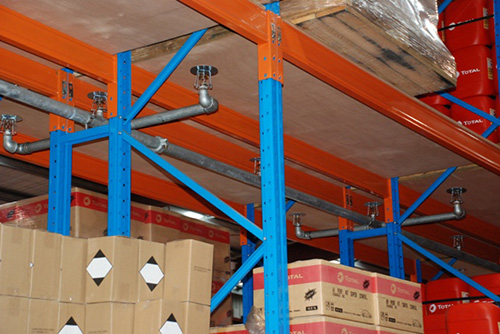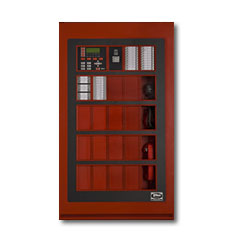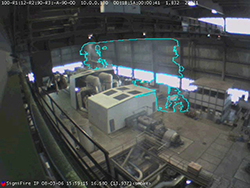7 Remarkable New Fire Safety Technologies
Faster, smarter technology means better fire safety technology. The basics of fire safety, from stocking the right extinguisher to knowing fire classes, remain the same, but technological advances build on the basics, making fire fighting quicker, easier, and more effective.
There are some truly amazing technologies being produced to fight fires in the 21st century. These advances make the most of sound waves, video, and detection technology to keep us all safer when fire strikes.
Sound Wave Fire Extinguisher
Two engineering students at George Mason University harnessed sound to put out fires. Their chemical-free, water-free extinguisher uses sound waves to separate burning fuel from oxygen. Fire dies out without oxygen, so using the soundwave extinguisher on a small fire snuffs it out.
Researchers previously patented this idea but this is the first sound wave extinguisher to work reliably. Not only does it work, but the final prototype is handheld (though, admittedly large) and only cost $600 to build.

(source:CNN)
The sound wave extinguisher provides non-destructive fire safety technology, which is ideal for home use. At the moment, the technology is only suitable for small fires since it does not contain a coolant. This means larger fires put out with soundwaves could reignite on hot surfaces. Researchers suggest that pairing this technology with drones could help in fighting large fires.
Water Mist Systems
Water mist fire safety technology improves on typical sprinkler systems, and is considered to be a major part of the future of firefighting. Water simply works, and it’s the most common agent used to fight fires today.
Instead of large droplets of water, water mist systems send out a fine mist that smothers a fire. Since the droplets are smaller, the mist systems create more of them. The larger surface area of droplets converts water to steam faster. The steam absorbs more heat from the flame, lowering the temperature of the fire, suffocating the fire faster than regular old water.
Mist systems also significantly decrease water damage. This is good news for business owners with costly equipment to protect. Even dry chemical systems are more likely to damage buildings and equipment when used. Water mist systems can be installed locally (for one area) or can cover an entire room. Mist can potentially fight electrical fires, making mist systems more versatile than typical sprinkler-type suppression systems.

(source: Fire Engineering)
Early Suppression Fast Response Fire Sprinkler Systems (ESFR)
In-rack sprinkler systems are a standard fire suppression solution used in warehouses with high-piled inventory. While effective, in-rack systems pose some problems. One pallet load mistake and pipes can burst, setting off the sprinklers and damaging stored items. When racks need to be rearranged, in-rack systems require expensive pipe reconfiguration. How are ESFR systems superior?

(source: Shelving Shop)
ESFR systems are ceiling-mounted, featuring high-pressure heads capable of producing a high volume of water – we’re talking about 100 gallons of water per minute. Unlike a conventional sprinkler system made to control a fire, ESFR fire safety technology suppresses the fire (shrinks it back to the point of origin). These systems require large amounts of water and are hooked up to fire pumps.

(source: VFPFire)
Integrated Voice Evacuation and Messaging System
Not all fire safety technologies are built to fight fires: some protect the people a fire can hurt. An integrated voice evacuation and messaging system alerts occupants with pre-recorded messages when a fire breaks out. Fike’s concept of “distributed intelligence” gives voice instructions to building occupants, customized to their particular location, in relation to the fire, and how to escape it. Fire evacuation plans and other safety information play over speakers so occupants can respond appropriately.

(source: Fike)
The system responds in a fraction of a second. It can be programmed so specific alerts, either instructions or tones, play during fires in certain parts of a building. Should a part of the building be compromised during an emergency, built in redundancies allow the technology to keep working. The scalability of this system make it a fit for small offices up to campuses with many buildings.
Personalized Vocal Smoke Alarms
A big problem that many families have had is kids sleeping through a fire alarm. What if your child is asleep, the fire alarm is going off but they don’t respond, and you’re unable to reach them? Fire alarms with voice capabilities are common in the market, but a familiar voice may be more likely to rouse a child from sleep than the wail of a smoke alarm.
In 2006, a company named SignalONE released a product called the Vocal Smoke Alarm, which allowed users to record a message using their own voice. A parent records their voice on the system, which cycles through the message and a loud beeping tone. Via the recorded message a parent can give out customized directions to children during a fire, like how to properly escape from their room and the house. That model is no longer available, and at the time of publishing, we were unable to find any similar products on the market.
Regardless, smoke detectors with pre-programmed voice alarms, like this model from FirstAlert, may be more likely to wake and assist small children in the event of a fire.
Birdi-Fire and Carbon Monoxide Detector
Birdi technology lets you keep a constant watch over your house, even over the things you can’t see. Simply put, Birdi is smart technology, and that technology does a whole lot more than manage the dangers of fire. The system monitors air quality, from high pollen counts to the presence of carbon monoxide. The in-house monitor reports to your smartphone and can call first responders via landline. Birdi is recognized for its ability to catch fast and slow burning fires quickly.

(source: Birdi)
Birdi can also call the occupant on the phone and ask if there is an emergency, making it ideal for older folks trying to keep their house safe. The system asks if it is a false alarm or real emergency, so the occupant can report the situation.
Video Image Smoke Detection
VISD technology detects smoke and flames visually. It can pinpoint the place where smoke begins. A computer analyzes whether images from cameras show evidence of smoke or flames. Once either is detected, a signal is sent to the alarm system. It can read the brightness, contrast, motion, and color of the smoke to assess the fire.

(source: OOR Protection)
Because the technology isn’t using spot detection, it can cover very large spaces. It’s currently being used in large indoor facilities with high ceilings (15+ feet), along with outdoor spaces like oil fields, mines, and in forestry.
Fires are unavoidable even when all necessary safety precautions are taken. Advances in technology improve our chances of fighting fires effectively with earlier detection and more versatile suppression methods. Keep an eye out for the latest in fire safety technology to keep yourself and the people you are responsible for safe in the event of a fire.

